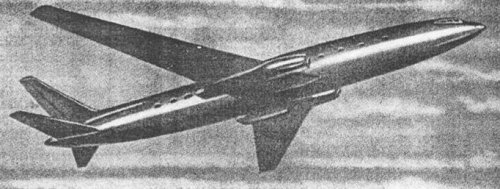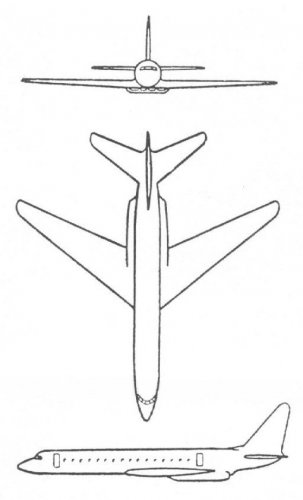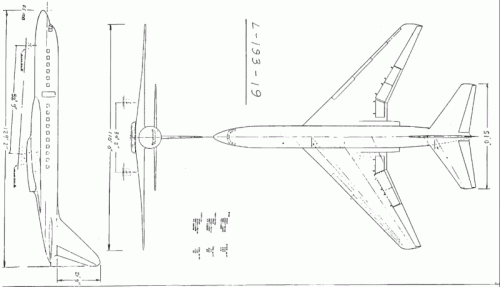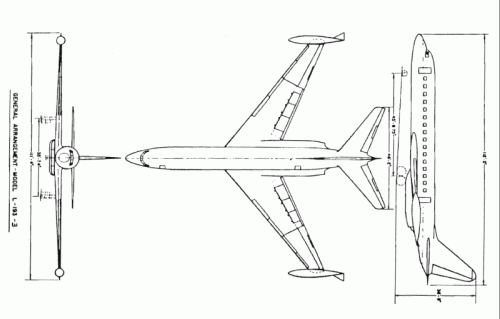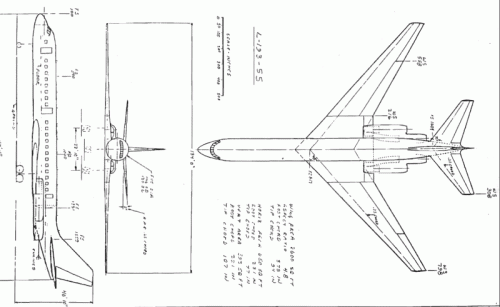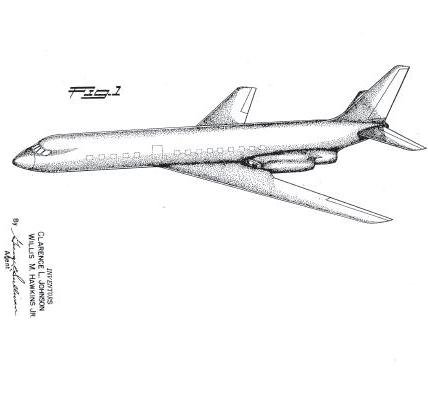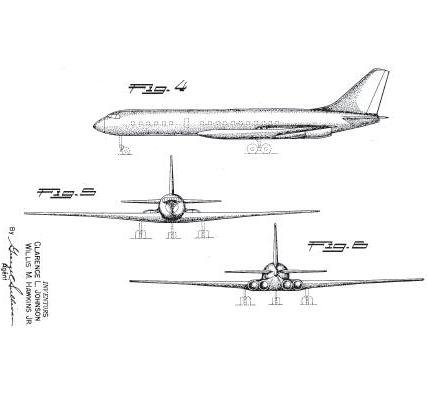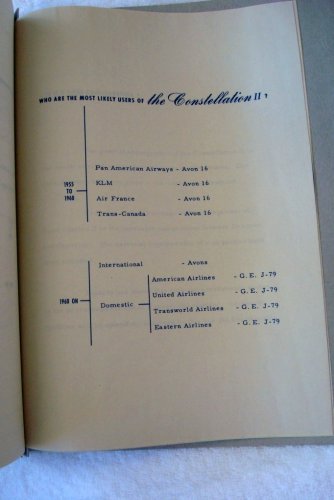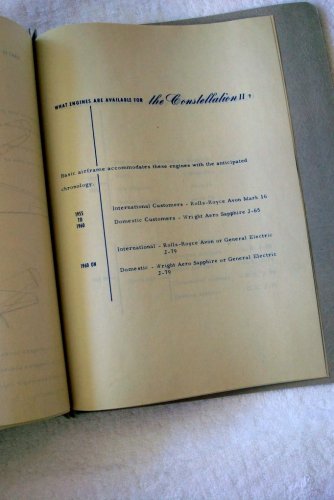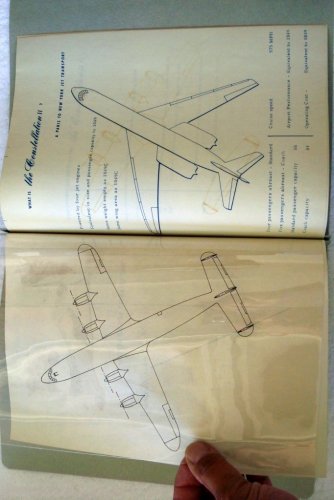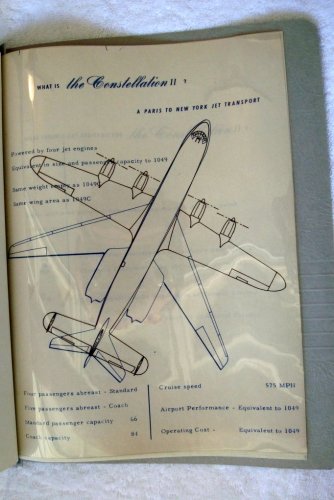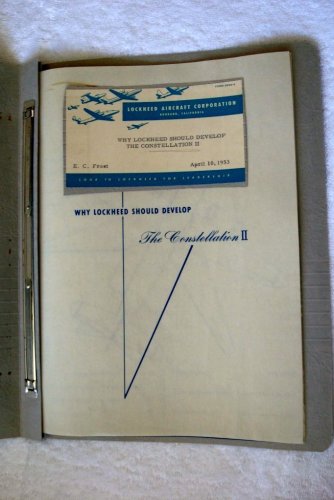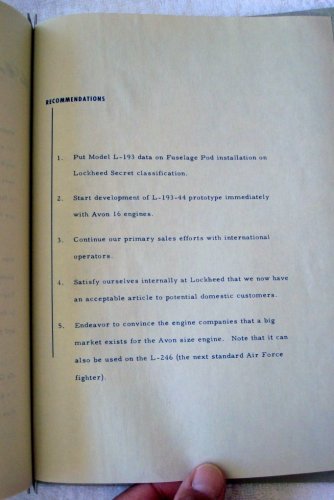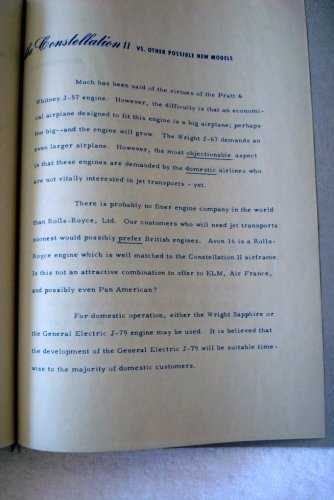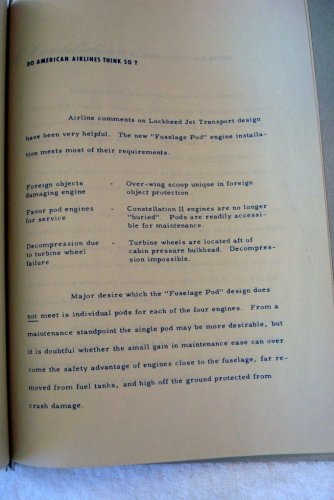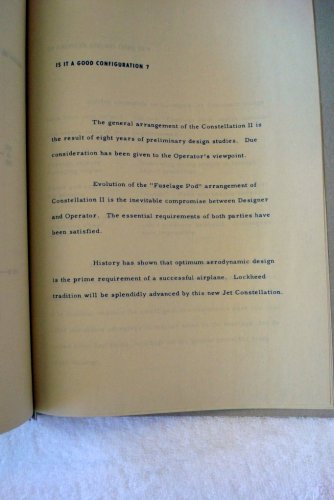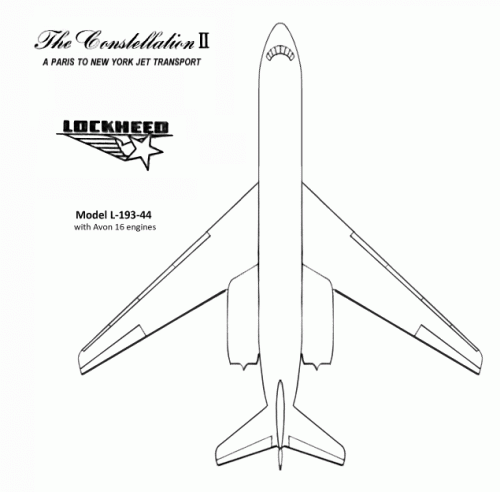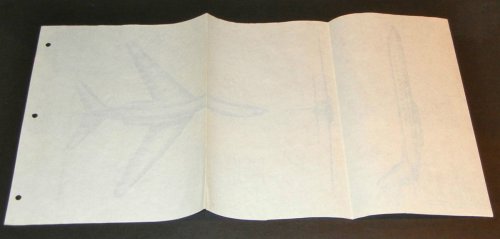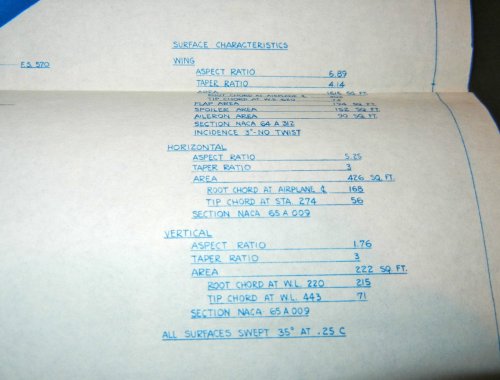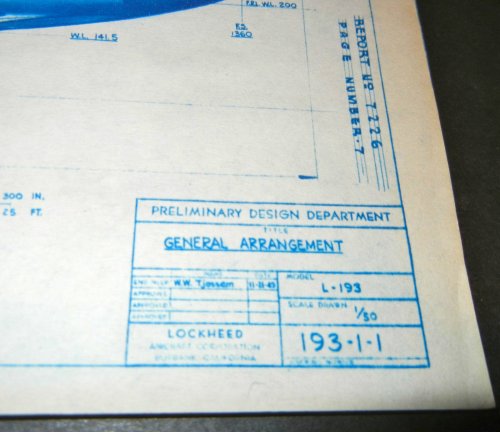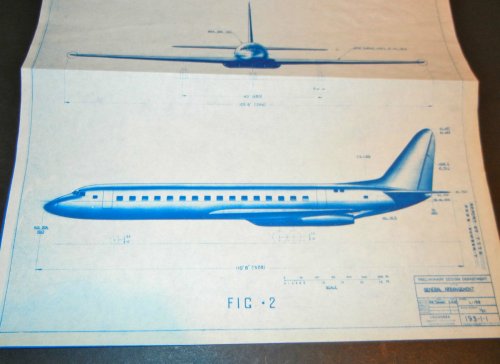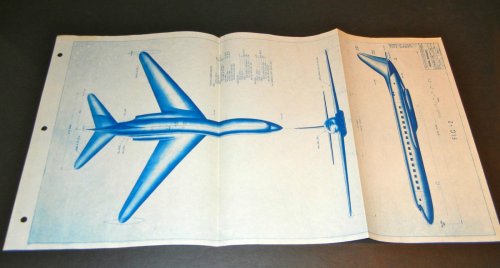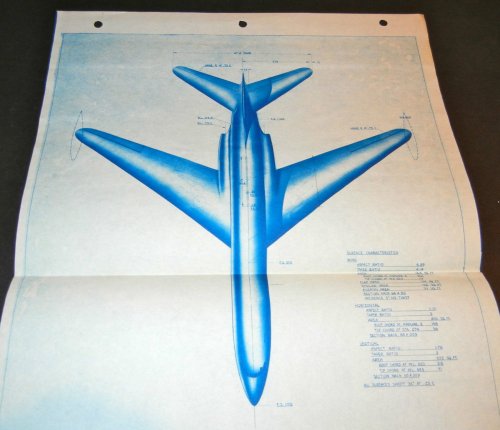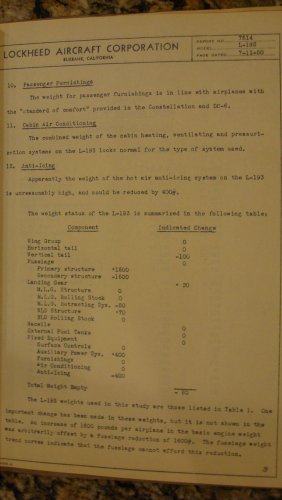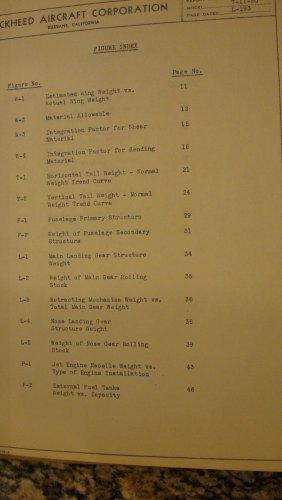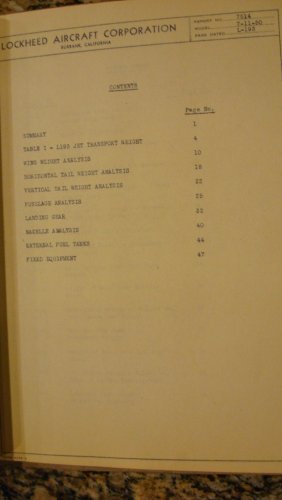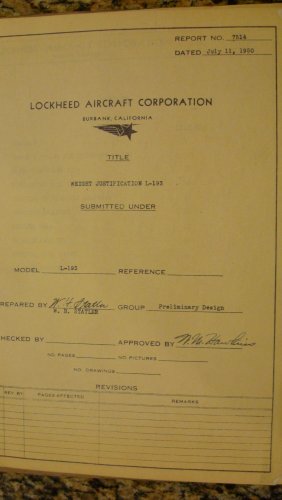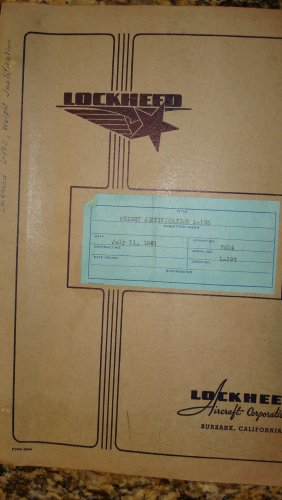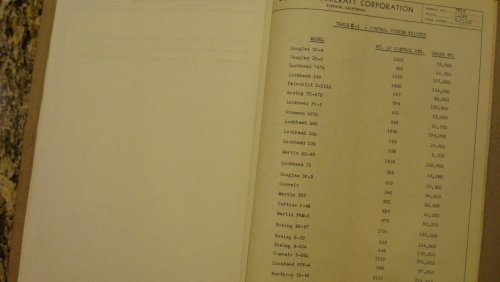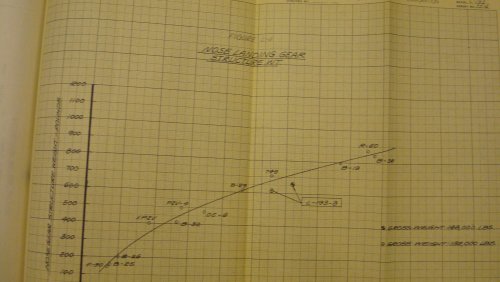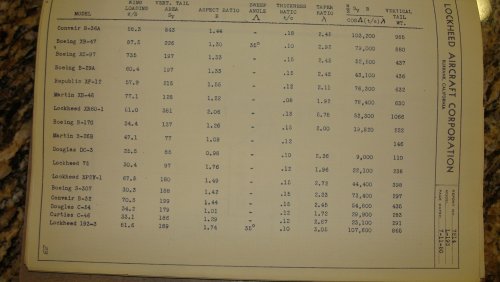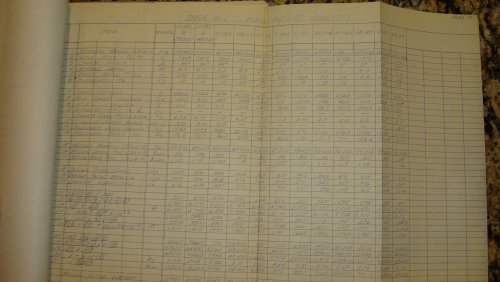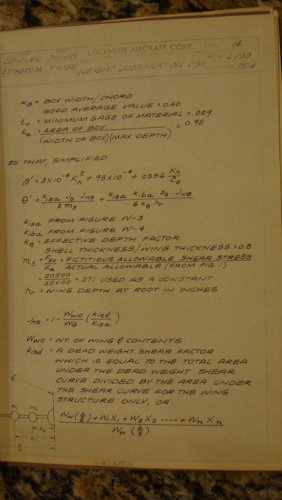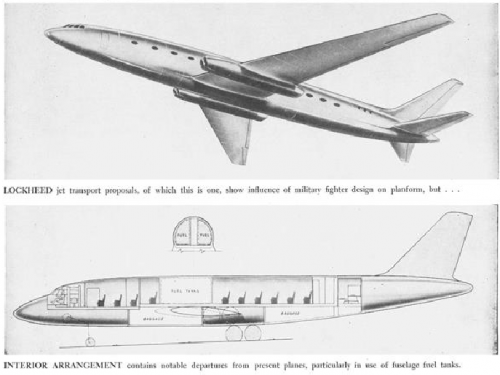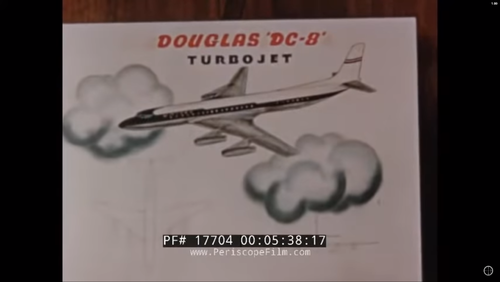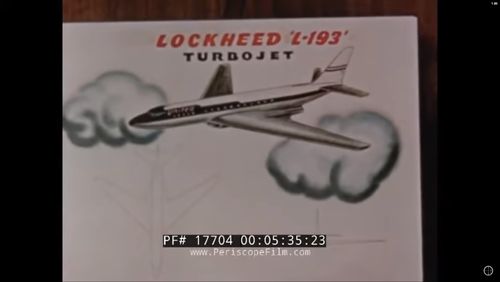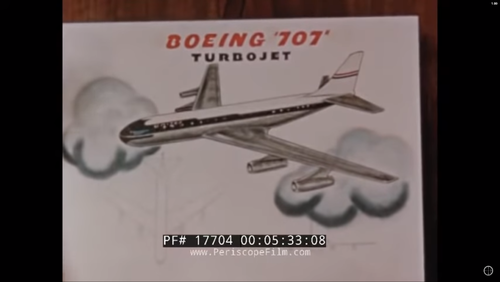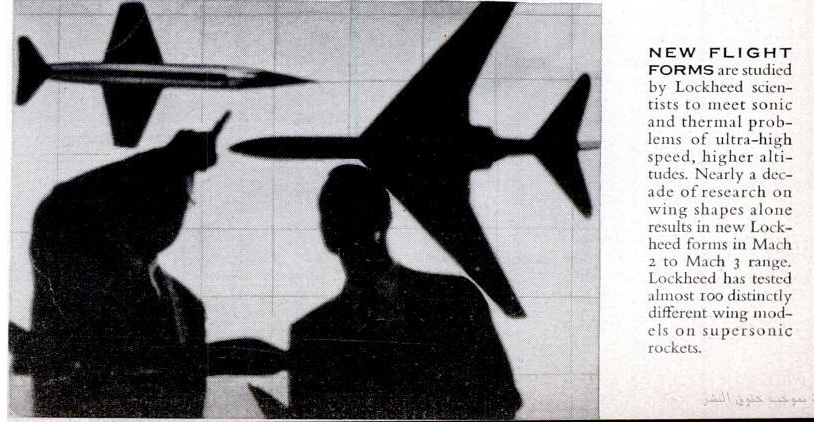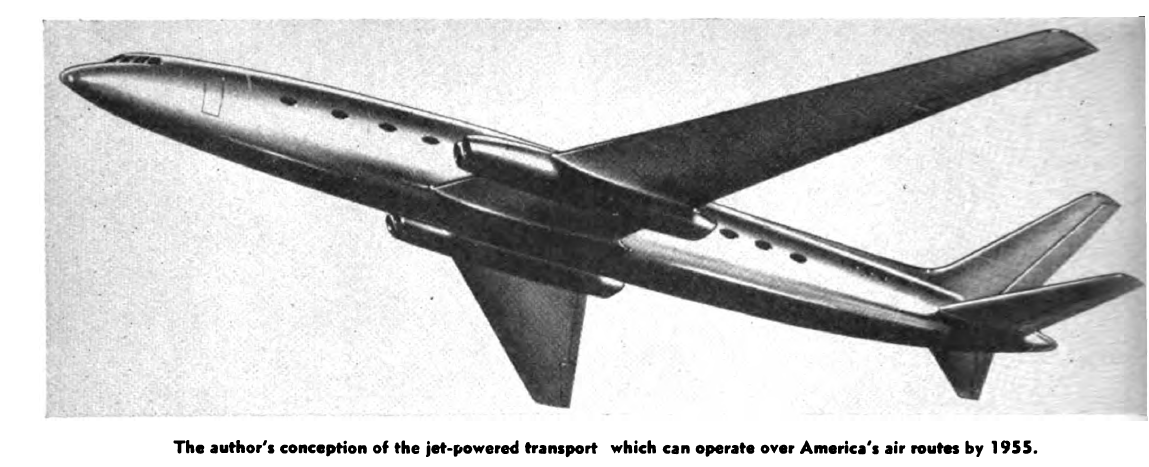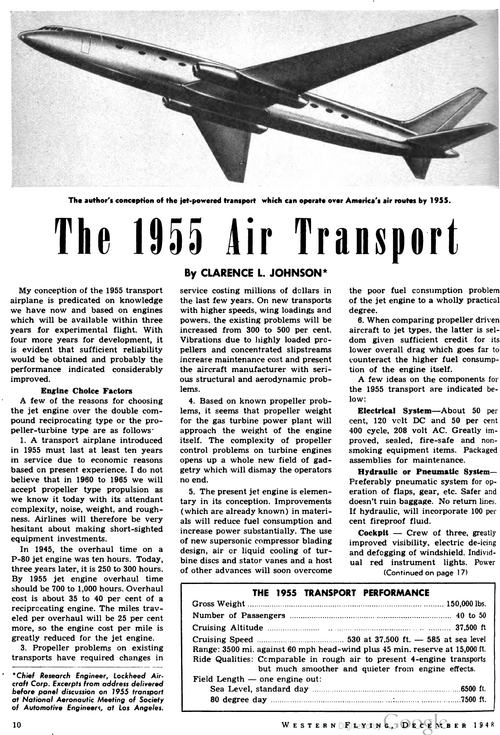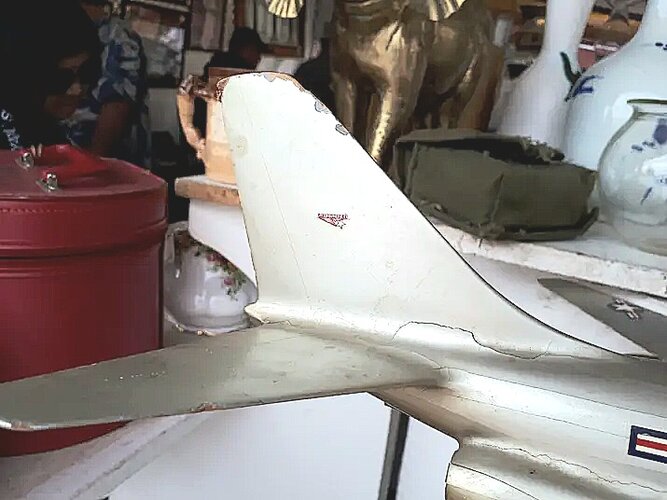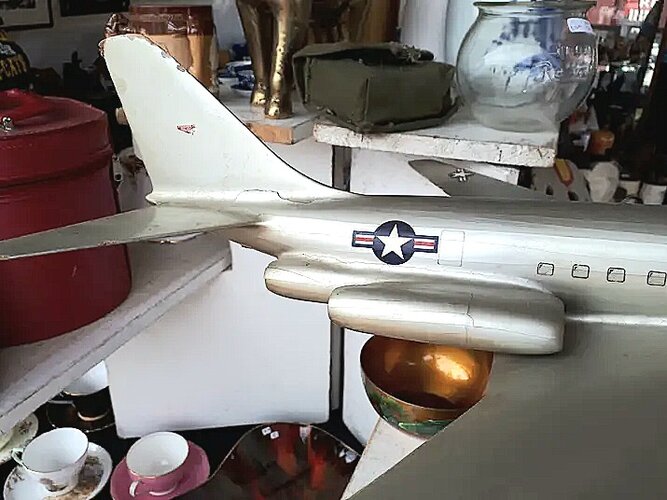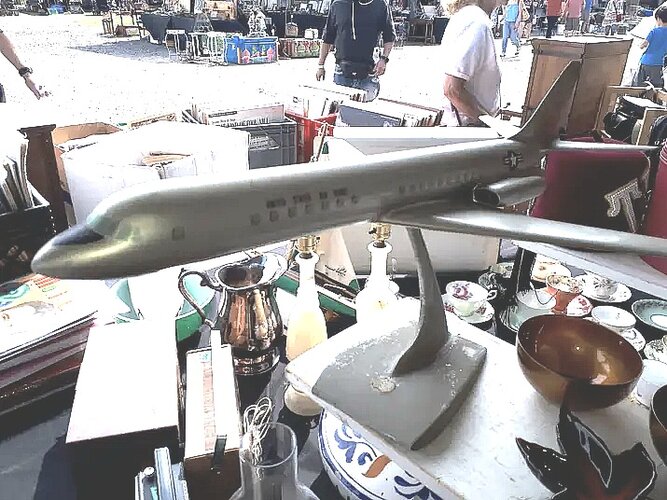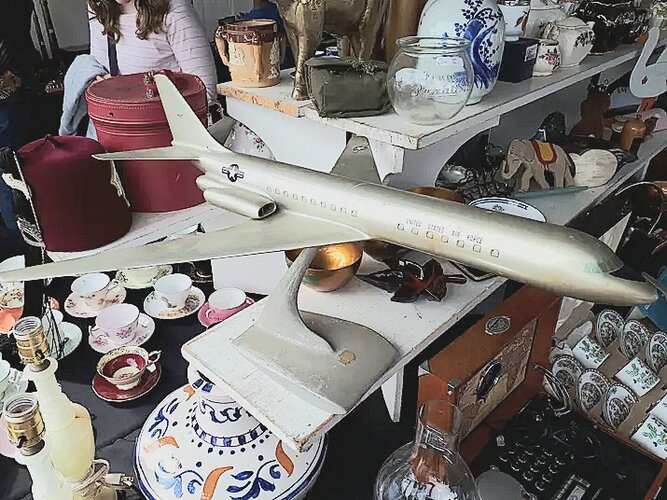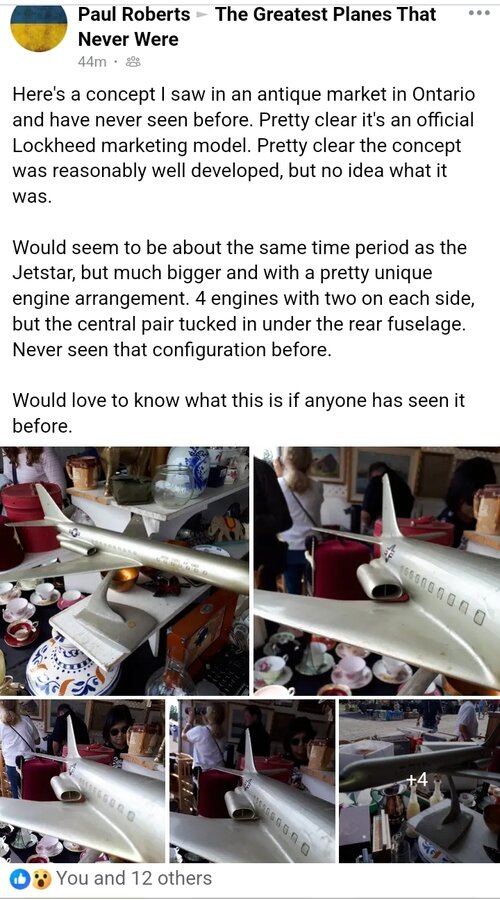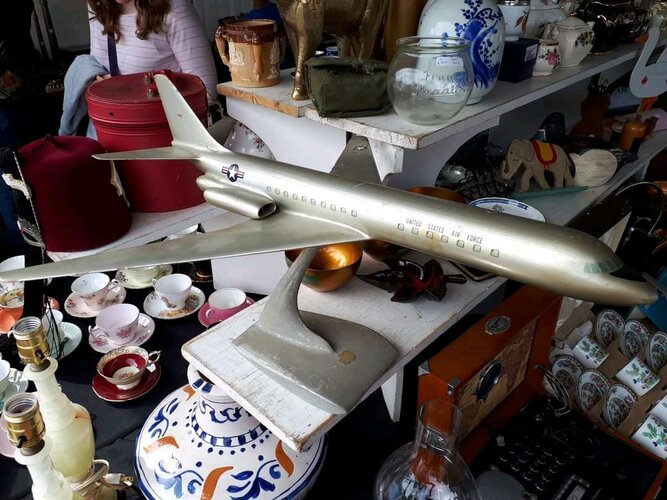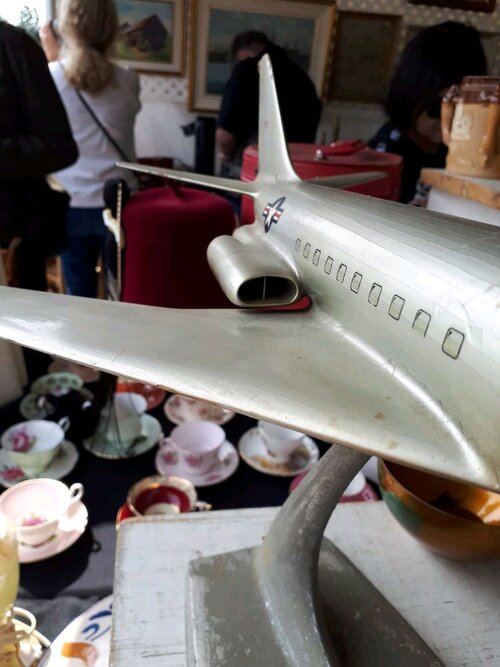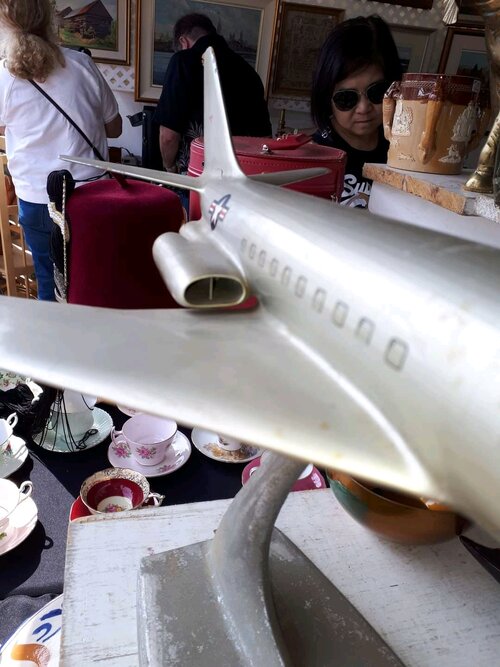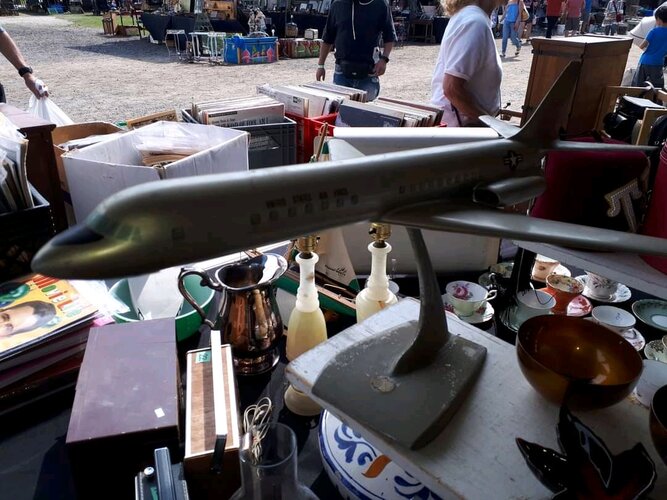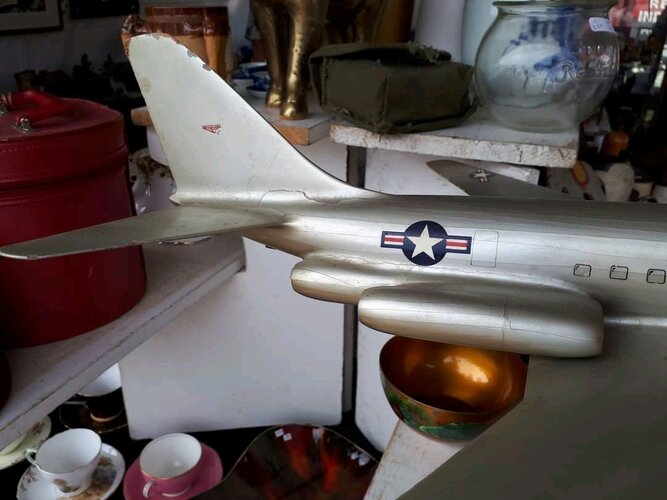WHAT IS THE CONSTELLATION II ?
A Paris to New York jet transport
Powered by four jet engines
Equivalent in size and passenger capacity to 1049
Same weight empty as 1049C
Same wing area as 1049C
Four passengers abreast - Standard
Five passengers abreast - Coach
Standard passenger capacity: 66
Coach capacity: 84
Cruise speed: 575 MPH
Airport Performance - Equivalent to 1049
Operating Cost - Equivalent to 1049
WHAT ENGINES ARE AVAILABLE FOR THE CONSTELLATION II ?
Basic airframe accomodates these engines with the anticipated chronology.
1955 to 1960
International Customers - Rolls-Royce Avon Mark 16
Domestic Customers - Wright Aero Sapphire J-65
1960 on
International - Rolls-Royce Avon or General Electric J-79
Domestic - Wright Aero Sapphire or General Electric J-79
WHO ARE THE MOST LIKELY USERS OF THE CONSTELLATION II ?
1955 to 1960
Pan American Airways - Avon 16
KLM - Avon 16
Air France - Avon 16
Trans-Canada - Avon 16
1960 on
International
- Avons
Domestic
- American Airlines - G. E. J-79
- United Airlines - G. E. J-79
- Transworld Airlines - G. E. J-79
- Eastern Airlines - G. E. J-79
IS IT A GOOD CONFIGURATION ?
The general arrangement of the Constellation II is the result of eight years of preliminary design studies. Due consideration has been given to the Operator's viewpoint.
Evolution of the "Fuselage Pod" arrangement of Constellation II is the inevitable compromise between Designer and Operator. The essential requirements of both parties have been satisfied.
History has shown that optimum aerodynamic design is the prime requirement of a successful airplane. Lockheed tradition will be splendidly advanced by this new Jet Constellation.
DO AMERICANS THINK SO ?
Airline comments on Lockheed Jet Transport design have been very helpful. The new "Fuselage Pod" engine installation meets most of their requirements.
Foreign objects damaging engine - Over-wing scoop unique in foreign object protection
Favor pod engines for service - Constellation II engines are no longer "buried". Pods are readily accessible for maintenance.
Decompression due to turbine wheel failure - Turbine wheels are located aft of cabine pressure bulkhead. Decompression impossible.
Major desire which the "Fuselage Pod" design does
not meet is individual pods for each of the four engines. From a maintenance standpoint the single pod may be more desirable, but it is doubtful whether the small gain in maintenance ease can over come the safety advantage of engines close to the fuselage, far removed from fuel tanks, and high off the ground protected from crash damage.
THE CONSTELLATION II VS. OTHER POSSIBLE NEW MODELS
Much has been said of the virtues of the Pratt & Whitney J-57 engine. However, the difficulty is that an economical airplane designed to fit this engine is a big airplane; perhaps too big--and the engine will grow. The Wright J-67 demands an even larger airplane. However, the most
objectionable aspect is that these engines are demanded by the
domestic airlines who are not vitally interested in jet transports - yet.
There is probably no finer engine company in the world than Rolls-Royce, Ltd. Our customers who will need jet transports soonest would possibly
prefer British engines. Avon 16 is a Rolls-Royce engine which is well matched to the Constellation II airframe. Is this not an attractive combination to offer to KLM, Air France, and possibly even Pan American?
For domestic operation, either the Wright Sapphire or the General Electric J-79 may be used. It is believed that the development of the General Electric J-79 will be suitable timewise to the majority of domestic customers.
RECOMMENDATIONS
- Put Model L-193 data on Fuselage Pod installation on Lockheed Secret classification.
- Start development of L-193-44 prototype immediately with Avon 16 engines.
- Continue our primary sales efforts with international operators.
- Satisfy ourselves internally at Lockheed that we now have an acceptable article to potential domestic customers.
- Endeavor to convince the engine companies that a big market exists for the Avon size engine. Note that it can also be used on the L-246 (the next standard Air Force fighter).
(from an original company report by E. C. Frost dated April 10, 1953)
 .
.
